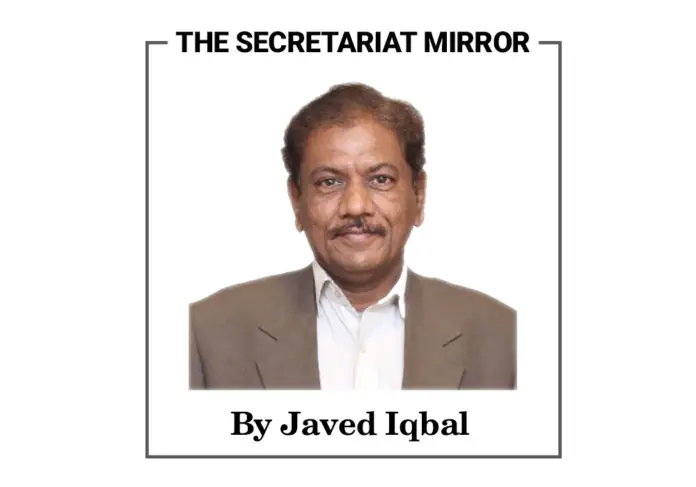Blockchain technology (BCT) is a distributed database that allows for secure, transparent and tamper-proof transactions both administrative and financial.
It can be used to improve systems bureaucracy by providing a secure and transparent way to track transactions and data. Without it, good governance will remain a distant dream.
Blockchain means that there is no central authority to control or manage the data — instead, it is spread over a network of computers. It may be accessed by the taxpayers. Because each computer has a copy of the entire database, this makes it virtually impossible to tamper.
Blockchain technology has the potential to revolutionize bureaucracy by making it more efficient and transparent. For example, blockchain could be used to create a digital ledger of government transactions that would be accessible to the public. This would allow citizens to track the flow of files, and funds and ensure they are being spent responsibly.
Our bureaucracy dates back to the colonial era when the British instituted a system of control through regulations. The aim was to manage and exploit India’s resources and masses. The British recruited Indians into the bureaucracy, but only the ones more loyal to the throne than the land.
After independence, the British system continued, despite getting slammed for its inefficiency and for serving the interests of political elites.
Many efforts were made to bring reforms into this archaic system but to no avail. Dr Ishrat Hussain led commissions, committees and task forces to reform bureaucracy also failed.
Over in India, Dehli CM Arvind Kejriwal revolutionized the service delivery system. He introduced the concept of the citizen’s charter, ensuring that citizens received timely services from government officials. He also introduced the concept of Swaraj, which empowered citizens to participate in decision-making processes related to government services. This improved transparency and accountability in the government system, and helped reduce corruption. The citizen engagement teams performed well and brought good governance.
Kejriwal also introduced mohalla sabhas (neighbourhood assemblies), where people could voice their opinions and participate in decision-making.
He also introduced the concept of transparency by making all government data open to public scrutiny. It helped reduce corruption as people could see what was happening in their government and hold their leaders accountable.
Likewise, Australian Securities Exchange (ASX) used this technology to improve the performance and efficiency of its system. Similarly, Georgia used it to improve the security of its land registry system. China is using it for commercial purposes. Canada and some countries — including Singapore, Estonia, and the UAE — are looking into using blockchain technology to improve the system.
Digital and blockchain technology can revolutionize the way bureaucracy works. Currently, when people want to blow the whistle on illegal activities in their workplace, they have to go through a complex and bureaucratic process that is time-consuming and futile.
With blockchain technology, whistleblowers could create a digital record of their allegations. This would allow them to safely submit their allegations to a decentralized database. Once the allegations are recorded, they would be visible to anyone who has access to the database. This would make it easier for whistleblowers to get their allegations heard, and also help ensure that these allegations are not ignored. Under the system allegations against public functionaries would be recorded and heard while assessing their cases promotion.
Bureaucracy doesn’t like blockchain technology as it threatens its existence. This technology eliminates the need for intermediaries, making it cheaper and faster for businesses to conduct transactions and increases tax collections. It minimizes the overlapping of mandates. This can be used to manage organizational structures. It may optimize supply chain management — such as demand patterns, production capacities, and transportation routes, to identify ways to improve efficiency and reduce costs. Other areas where BCT can use include the recruitment process, education, development sector, health care, ride-sharing, etc.
Planning and Development Board can actively use technology to approve development schemes on the basis of population, tax collection, and poverty. Agriculture can use it to cultivate specific crops for specific areas. The irrigation system may be regulated through this technology to distribute water in canals, whereas the transport department can check on vehicles, forests on trees, and the environment for pollution control. Health and education sectors can also use this technology to guide students in the scopes of practical fields.
The finance department can use this technology to reflect the flow of funds. Excise and police can control crime, board of revenue and urban development authorities can also utilise this to streamline land ownership and mutations.
The Right to Information Act 2013 was enacted to increase transparency and greater scrutiny of government activities. But results are not encouraging.
Punjab Information Technology Board (PITB) was established to do the same, but it too failed.
The same reformation may be assigned to any IT university to design, operate and transfer to government agencies. All files will be replaced with a paperless system. The BCT would do the right sizing, cut across-the-board incentives and link allowances to the performance of officials.
This can only be done by political will and visionary leadership. The bureaucracy and corrupt ruling elite will try to nip the IT reforms package in the bud as it did to PIDA, PITB and Public Safety Commissions.
Former director general Dr Irfan said that without adopting new technologies, there is no chance to get rid of this obsolete and age-old colonial system designed to keep people, slaves. “Give authority, fix responsibility and do accountability of each tier.” He said there was no need for an army of officers; the BCT would cut short the overstaffing flatly to half.
Devoid of a system, the country, economy and people continue to suffer.








Comments are closed.